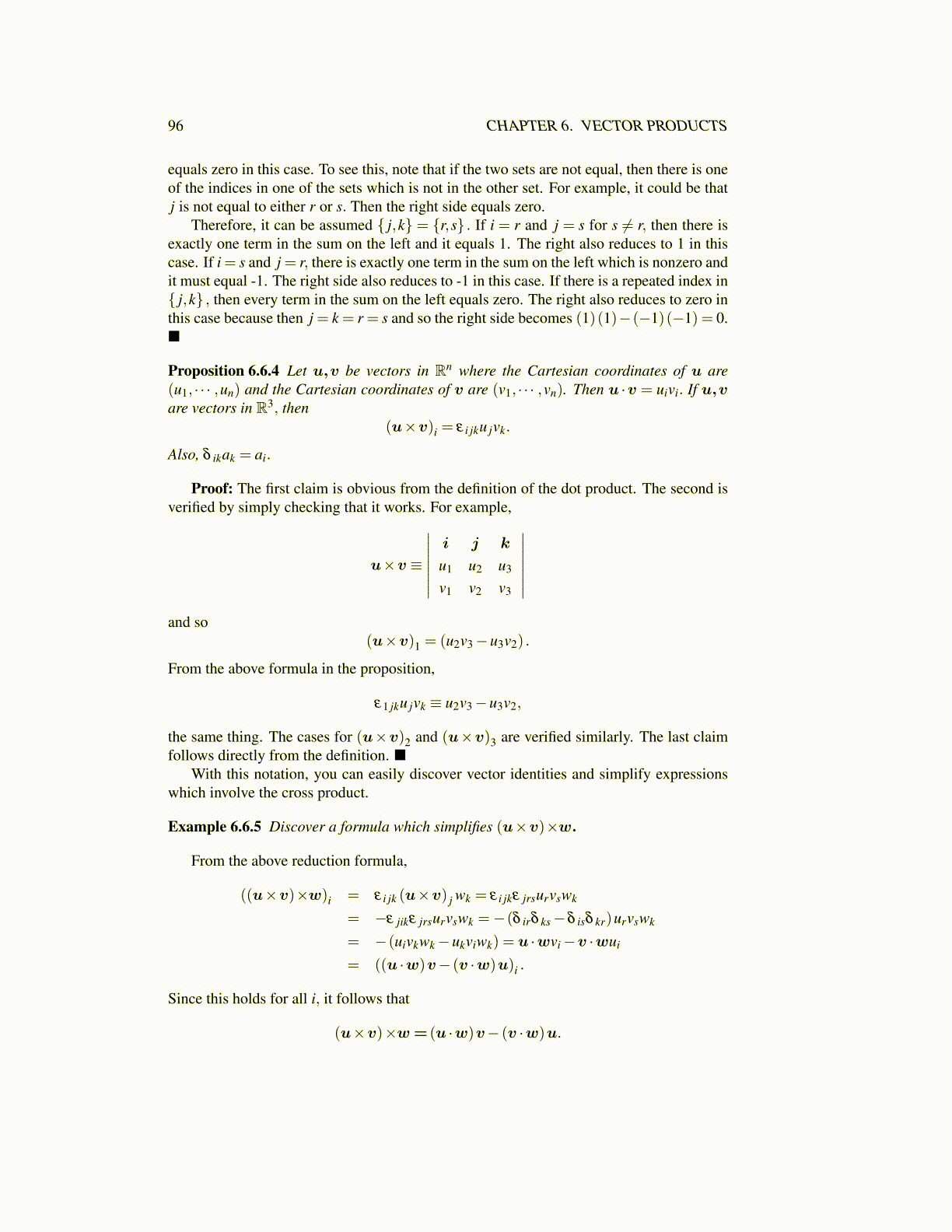
96 CHAPTER 6. VECTOR PRODUCTS
equals zero in this case. To see this, note that if the two sets are not equal, then there is oneof the indices in one of the sets which is not in the other set. For example, it could be thatj is not equal to either r or s. Then the right side equals zero.
Therefore, it can be assumed { j,k} = {r,s} . If i = r and j = s for s ̸= r, then there isexactly one term in the sum on the left and it equals 1. The right also reduces to 1 in thiscase. If i = s and j = r, there is exactly one term in the sum on the left which is nonzero andit must equal -1. The right side also reduces to -1 in this case. If there is a repeated index in{ j,k} , then every term in the sum on the left equals zero. The right also reduces to zero inthis case because then j = k = r = s and so the right side becomes (1)(1)−(−1)(−1) = 0.■
Proposition 6.6.4 Let u,v be vectors in Rn where the Cartesian coordinates of u are(u1, · · · ,un) and the Cartesian coordinates of v are (v1, · · · ,vn). Then u ·v = uivi. If u,vare vectors in R3, then
(u×v)i = ε i jku jvk.
Also, δ ikak = ai.
Proof: The first claim is obvious from the definition of the dot product. The second isverified by simply checking that it works. For example,
u×v ≡
∣∣∣∣∣∣∣i j k
u1 u2 u3
v1 v2 v3
∣∣∣∣∣∣∣and so
(u×v)1 = (u2v3−u3v2) .
From the above formula in the proposition,
ε1 jku jvk ≡ u2v3−u3v2,
the same thing. The cases for (u×v)2 and (u×v)3 are verified similarly. The last claimfollows directly from the definition. ■
With this notation, you can easily discover vector identities and simplify expressionswhich involve the cross product.
Example 6.6.5 Discover a formula which simplifies (u×v)×w.
From the above reduction formula,
((u×v)×w)i = ε i jk (u×v) j wk = ε i jkε jrsurvswk
= −ε jikε jrsurvswk =−(δ irδ ks−δ isδ kr)urvswk
= −(uivkwk−ukviwk) = u ·wvi−v ·wui
= ((u ·w)v− (v ·w)u)i .
Since this holds for all i, it follows that
(u×v)×w= (u ·w)v− (v ·w)u.